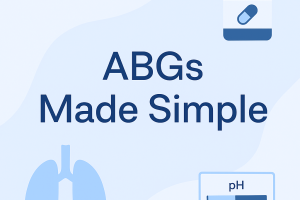NCLEX Preparation: How to Tackle Select-All-That-Apply (SATA) Questions Effectively

Select-All-That-Apply (SATA) questions are a common and often challenging component of the NCLEX exam. These questions test a candidate’s ability to apply critical thinking, recognize patterns, and analyze multiple aspects of nursing knowledge simultaneously. Preparing for SATA questions requires a strategic approach, as they do not follow the traditional multiple-choice format and have unique requirements.
This blog will provide an in-depth guide to understanding and answering SATA questions, discuss effective strategies to boost your performance, and include NCLEX-style SATA questions to help refine your skills.
1. Understanding SATA Questions
SATA questions present a scenario followed by a list of potential answers. The candidate must select all the correct options related to the question, and no partial credit is given. Each response must be evaluated independently, as there may be more than one, or even all, correct options.
Key features of SATA questions:
• They are designed to assess higher-order thinking, such as analysis, application, and evaluation.
• SATA questions are often linked to specific nursing processes, including assessment, planning, intervention, or evaluation.
• A wrong answer can significantly impact the test-taker’s confidence, emphasizing the importance of preparation.
2. Strategies for Tackling SATA Questions
Mastering SATA questions begins with understanding their format and applying evidence-based test-taking strategies.
• Read the Question Carefully: Pay close attention to keywords like “most appropriate,” “priority,” or “requires immediate action.” These words set the tone for critical decision-making.
• Consider Each Option Individually: Treat each answer as a true/false statement in relation to the question. This prevents you from overthinking or grouping unrelated responses.
• Apply Clinical Knowledge: Use frameworks such as Maslow’s hierarchy of needs or the ABCs (airway, breathing, circulation) to evaluate which options are correct.
• Beware of Absolutes: Avoid selecting answers that include extreme language like “always” or “never” unless supported by solid clinical evidence.
• Focus on the Nursing Process: Questions often align with specific steps in the nursing process, such as assessment or intervention. Identifying the step helps in narrowing down correct options.
• Practice Active Elimination: If unsure, eliminate the options you are confident are incorrect, and focus on the remaining choices.
• Prepare Thoroughly: Use NCLEX practice exams and reputable resources like NCSBN or Kaplan to simulate test conditions and build familiarity with the SATA format.
3. Common Topics in SATA Questions
SATA questions can cover a wide range of nursing topics, including:
• Patient safety and infection control
• Pharmacology and medication administration
• Physiological adaptation
• Health promotion and maintenance
• Psychosocial integrity
Each topic requires a thorough understanding of nursing principles and the ability to make sound judgments based on patient scenarios.
4. Example NCLEX-Style SATA Question
Below is an example of how a SATA question may appear on the NCLEX:
Question: A nurse is caring for a patient with newly diagnosed type 1 diabetes mellitus. Which of the following statements made by the patient indicate an understanding of insulin administration? Select all that apply.
A. “I should rotate injection sites to avoid lipodystrophy.”
B. “I can skip a dose if my blood sugar is normal.”
C. “I need to store unopened insulin vials in the refrigerator.”
D. “I should mix regular and NPH insulin in the same syringe in any order.”
E. “I must eat within 15 minutes of injecting rapid-acting insulin.”
Answer: A, C, E
• A: Rotating injection sites is correct to avoid lipodystrophy.
• C: Unopened insulin should be stored in the refrigerator to maintain its effectiveness.
• E: Rapid-acting insulin requires food intake shortly after injection to prevent hypoglycemia.
Options B and D are incorrect because skipping insulin doses can lead to hyperglycemia, and regular insulin should be drawn into the syringe before NPH insulin to avoid contamination.
5. NCLEX Tips for SATA Questions
• Practice extensively with SATA-specific practice tests to build confidence.
• Manage time wisely during the test and avoid spending too long on any single question.
• Stay calm and focused. Approaching questions with a clear mind improves accuracy.
• Always rely on evidence-based nursing practices to guide decision-making.
6. Practice Questions
To solidify your understanding, here are three additional NCLEX-style SATA questions:
Question 1: The nurse is educating a patient about hypertension management. Which of the following indicate proper understanding? Select all that apply.
A. “I should avoid adding salt to my meals.”
B. “I can stop taking my medication when my blood pressure is normal.”
C. “Regular exercise can help lower my blood pressure.”
D. “I should limit my alcohol intake to one drink per day.”
E. “I will take my medication only when I feel symptoms of high blood pressure.”
Answer: A, C, D
Question 2: A nurse is planning care for a patient with chronic obstructive pulmonary disease (COPD). Which interventions are appropriate? Select all that apply.
A. Encourage deep-breathing exercises.
B. Place the patient in a supine position.
C. Provide low-flow oxygen as prescribed.
D. Teach pursed-lip breathing techniques.
E. Restrict fluid intake to prevent pulmonary edema.
Answer: A, C, D
Question 3: The nurse is reviewing dietary recommendations with a patient who has chronic kidney disease. Which statements indicate understanding? Select all that apply.
A. “I should limit my potassium intake.”
B. “I will avoid processed foods that are high in sodium.”
C. “I need to eat a high-protein diet to compensate for kidney damage.”
D. “I will limit my fluid intake as directed by my healthcare provider.”
E. “I can include whole-grain bread in my diet freely.”
Answer: A, B, D
Conclusion
Select-All-That-Apply (SATA) questions can be daunting, but with the right preparation and strategies, they are manageable. Focus on mastering test-taking techniques, enhancing your clinical knowledge, and practicing regularly to build confidence. Understanding the rationale behind each correct and incorrect answer is key to mastering this NCLEX format and excelling in your exam.






